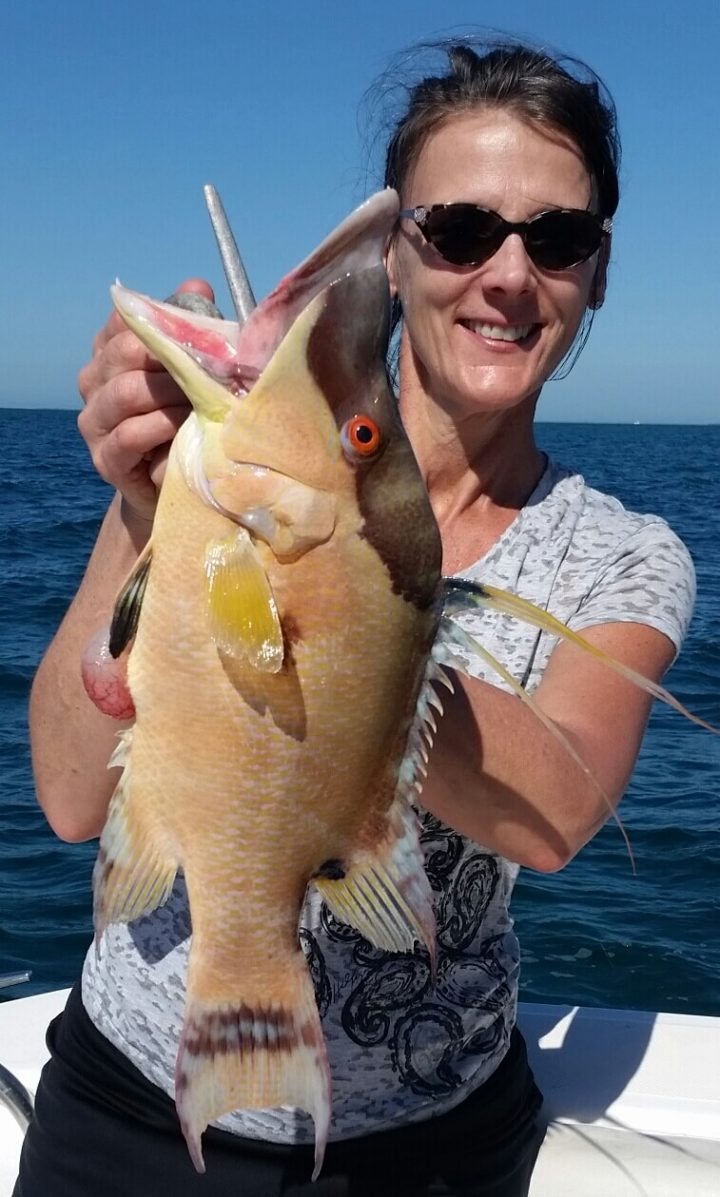The relatively mild winter we had speaks well for our March fishing, especially on the reef.
Fishing for yellowtail snappers has remained dynamic, and that action should only accelerate with the warming waters. Most of the early-season activity is in the 30- to 50-foot areas, with the average size at 14 to 16 inches.
The key to catching this tasty snapper species is the use of light leaders, small light wire hooks and lots of chum.
Our typical yellowtail setup is a Star Rods Stellar Lite (12lb or 15lb) with a Penn Slammer III 5500 spooled with Berkley Big Game 12lb test. For leader, we use Seaguar Blue Label 15lb with an Owner #4 Mutu Light hook.
Copious amounts of chum are essential to get and keep the yellowtails’ attention. For best results, use a slop mixture of a couple pounds of oats and YellowtailUp from Aquatic Nutrition in combination with your frozen block chum. And, the best baits are shrimp or small pieces of ballyhoo, silversides or glass minnows.
For greatest success, get up-tide of your fish and anchor up. Get a healthy chum slick going by starting with your frozen chum block in your chum net and throwing handfuls of the YellowtailUp/oats mixture. The YellowtailUp will transport mildly interested snappers into a feeding frenzy.
Drift your baits back in your slick, and you should be hooked up in no time!
Mixed in with the yellowtails could be mangrove and mutton snappers as well as king and cero mackerel. And, if the current isn’t too strong, you can fish a jig-and-shrimp combo on the bottom for porgies and hogfish. You’ll probably also catch a few groupers, which must be released as the season is closed until May 1.
Just outside the reef, we hope to enjoy continued sailfish action. Typically, the sails range a little deeper this time of year in the 120- to 200-foot zones. However, if there are ballyhoo on the reef, keep your eyes peeled for sailfish right up on the reef edge.
March is a great time to fly a kite in many parts of the country. Here in Marathon, our kites have baits dangling from them.
We like to use larger baits, such as threadfin herring, goggle eyes or small bluerunners. The fun is you just don’t know what you may attract, including dolphin, blackfin tuna, kingfish, wahoo and sailfish.
Out on the Atlantic wrecks, there’s plenty of bottom fishing for muttons and kings. And, amberjack season reopens on March 1. Based on the number we released during February, there should be countless for the taking.
Live baits are best, such as pilchards, ballyhoo and pinfish. To target the largest amberjacks, I recommend small- to medium-size bluerunners.
Around the bridges and flats, the shark migration begins in earnest. Blacktips, spinners, bulls and lemons all respond to fresh chum. We use Bloodstream Top Predator Chum from Aquatic Nutrition. Fresh baits are best, including filets of bluerunners, mackerel or jacks and chunks of ladyfish. For outstanding action, put a live bluerunner up on a kite!
Our setup for shark fishing is a Star Stellar Lite 20lb rod, Penn Slammer III or SSV 7500, Berkley Big Game 20lb test and 80lb shock leader to a two-foot section of #7 wire with a 9/0 Owner SSW in line circle hook.
Capt. Chris Johnson specializes in offshore, reef/wreck, gulf/bay, sailfish, shark and tarpon fishing with SeaSquared Charters, docked at Faro Blanco Resort and Yacht Club in Marathon. You can reach him at (305)-743-5305, http://SeaSquaredCharters.com. For daily fishing reports with pictures, please click over to http://Facebook.com/MarathonFishing.

